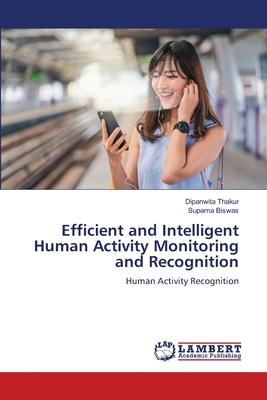This book introduces the readers to a comprehensive idea to implement machine learning-based physical activity recognition frameworks. This book covers the challenges and their respective solutions of machine learning-based human activity monitoring and recognition frameworks. A novel feature selection method, modified guided regularized random forest, is introduced to accurately select the most relevant and important features to address the "curse-of-dimensionality" and "overfitting" issues. Ensemble learning, Random projection-based ELM, feature fusion, and deep learning frameworks with attention mechanisms are explored for human activity recognition in the rest of the chapters. The importance of transitional activities is also discussed concerning hemiplegia gait analysis and the concept of online change point detection segmentation method is also introduced. Finally, the book ends with a flexible activity recognition and real-time monitoring system (Flexi-HAMR), which can efficiently monitor and recognize activities using online, real-time data streams and also update the model dynamically for any new activity such as Parkinsonian gait for early disease prediction.
| FindBook |
有 1 項符合
Efficient and Intelligent Human Activity Monitoring and Recognition的圖書 |
 |
Efficient and Intelligent Human Activity Monitoring and Recognition 作者:Thakur 出版社:LAP Lambert Academic Publishing 出版日期:2024-04-11 語言:英文 規格:平裝 / 404頁 / 22.86 x 15.24 x 2.29 cm / 普通級/ 初版 |
| 圖書館借閱 |
| 國家圖書館 | 全國圖書書目資訊網 | 國立公共資訊圖書館 | 電子書服務平台 | MetaCat 跨館整合查詢 |
| 臺北市立圖書館 | 新北市立圖書館 | 基隆市公共圖書館 | 桃園市立圖書館 | 新竹縣公共圖書館 |
| 苗栗縣立圖書館 | 臺中市立圖書館 | 彰化縣公共圖書館 | 南投縣文化局 | 雲林縣公共圖書館 |
| 嘉義縣圖書館 | 臺南市立圖書館 | 高雄市立圖書館 | 屏東縣公共圖書館 | 宜蘭縣公共圖書館 |
| 花蓮縣文化局 | 臺東縣文化處 |
|
|
圖書介紹 - 資料來源:博客來 評分:
圖書名稱:Efficient and Intelligent Human Activity Monitoring and Recognition
|











